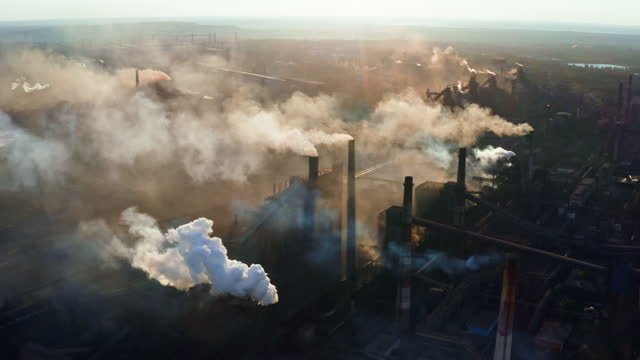On this page, we discuss the main sources of CO2 emissions in South Africa.
As one of the most industrialized countries in Africa, South Africa faces a significant challenge in mitigating its carbon dioxide (CO2) emissions. Understanding the primary sources of these emissions is crucial for both policy formulation and public awareness. This article aims to shed light on the main contributors to CO2 emissions in South Africa.
The Main FOUR Sources of CO2 Emissions in South Africa
Energy Production
Energy production is the linchpin of South Africa’s economy, powering industries, homes, and essential services. However, this comes at an environmental cost, as the country’s energy sector is a significant contributor to its overall CO2 emissions. Dominated by coal-fired power plants, South Africa’s energy production landscape remains a focal point for both environmentalists and policymakers aiming to balance economic growth with sustainability. Understanding the intricate dynamics of how energy production contributes to CO2 emissions is vital for assessing the country’s environmental impact and crafting actionable policies to mitigate it.
Coal-Based Power Generation
South Africa heavily relies on coal for its energy needs, and coal-fired power plants are a major source of CO2 emissions in the country. According to the Department of Environmental Affairs, coal-based power generation accounts for a large percentage of the country’s total emissions.
Petroleum Consumption
Oil and natural gas also contribute to CO2 emissions, primarily through transportation and industrial activities. The combustion of fossil fuels in vehicles and machinery releases a significant amount of carbon dioxide.
Renewable Energy’s Slow Uptake
Despite an increasing focus on renewable energy sources like wind and solar, the transition has been slow, keeping coal as the dominant source of electricity and thus, CO2 emissions.
Industrial Activities
South Africa’s industrial sector is a cornerstone of its economic prowess, housing a myriad of activities ranging from mining and metal production to manufacturing. While these industries have fueled the country’s economic development, they are also major sources of CO2 emissions. The high energy demands of these sectors, coupled with the often inefficient technologies they employ, make industrial activities a critical area of focus for reducing South Africa’s carbon footprint. This segment aims to unpack the various ways in which industrial activities contribute to the country’s CO2 emissions and offer insights into potential areas for improvement.
Mining and Metal Production
South Africa’s robust mining sector, particularly in gold and platinum, is another significant source of CO2 emissions. The processes involved in extracting and refining metals contribute to greenhouse gas emissions.
Manufacturing
Factories involved in producing goods, from consumer products to chemicals, also release a considerable amount of CO2. Energy-intensive industries, such as steel and cement manufacturing, are particularly problematic.
Agriculture and Land Use
While often overshadowed by the more energy-intensive sectors, agriculture and land use in South Africa also play a noteworthy role in the country’s CO2 emissions profile. From livestock farming to deforestation, these activities both directly and indirectly contribute to greenhouse gas emissions. Moreover, the country’s rapid urbanization and industrial expansion have led to significant changes in land use, further exacerbating the problem. This section will delve into the multifaceted ways agriculture and land use contribute to CO2 emissions in South Africa, highlighting the urgency to address these less-discussed but equally important factors.
Livestock Farming
Livestock farming produces methane, which eventually converts to CO2 in the atmosphere. While not as voluminous as emissions from energy production, the impact is still noteworthy.
Deforestation and Land Use
Urban development and industrial expansion have led to deforestation and changes in land use, contributing to CO2 emissions indirectly. When forests that act as carbon sinks are destroyed, stored carbon is released into the atmosphere.
Transportation
Motor Vehicles
South Africa has a high rate of motor vehicle ownership, and the transport sector is a significant contributor to CO2 emissions. Cars, trucks, and buses running on fossil fuels are a common sight, releasing CO2 in the process.
Aviation and Maritime Activities
Although smaller in scale compared to road transportation, aviation and maritime activities also contribute to the CO2 emissions profile of the country.
Conclusion
Understanding the primary sources of CO2 emissions in South Africa is essential for crafting effective policies and encouraging responsible behavior. While energy production remains the largest contributor, industrial activities, agriculture, and transportation also play substantial roles. Addressing these issues requires a multifaceted approach, involving government, industry, and civil society, to transition towards a more sustainable and low-carbon economy.






